Pear trees are favorites of home orchardists for countless reasons.
Mouths are amused by that signature, slightly gritty texture of the sweet, succulent fruit. Bodies benefit from the vitamin C, potassium, and fiber delivered in each bite.
Creative cooks harness the versatility of using pears in the kitchen.
And pear trees are not only low maintenance, but they’re also easy on the eye – unique works of art appreciated for their cheerful spring blossoms and stately presence, even in ornamental gardens.
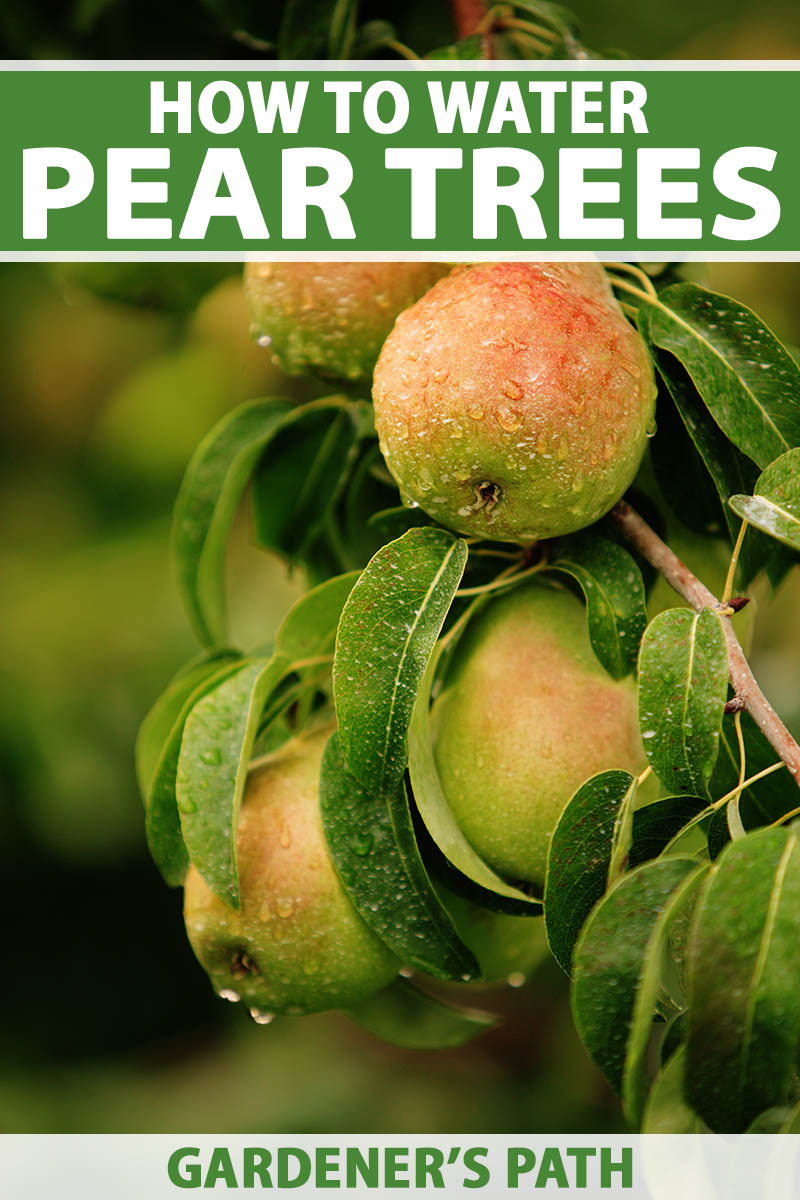
We link to vendors to help you find relevant products. If you buy from one of our links, we may earn a commission.
In fact, I often think of my garden as a gallery. The plants are my sculptures that reveal their beauty over time. Everything I do to foster their care helps shape the ever-changing artistic expression.
As I anxiously await the first flowering and fruits on my own young pear trees, I want to make sure I’m giving them what they need to live their best lives. Water plays such an important role for any fruit tree, and pears are no different.
It’s true that pears are somewhat drought tolerant. And it’s also true that regular, consistent watering produces the best results for overall performance. But it’s important to remember that if you water a pear tree the wrong way, you risk compromising its health.
This can stunt the tree’s growth, reduce fruit size and yield, and leave plants prone to pests and diseases.
Knowledge is power. The more you know, the better decisions you can make for your pear trees.
There are a few factors to consider when deciding how, when, and how much to water your pears like climate, soil, age, and the season. I’ll cover all of that and more in this article.
Here’s what you can expect up ahead:
What You’ll Learn
Ready to quench your thirst for knowledge? Let’s dive right in!
Why Pears Need Water
A pear is made up of 80 to 90 percent water, so it’s no surprise that this life-sustaining liquid plays such an important role in the development of these fruits.

Water is necessary for all plant processes, including the absorption of nutrients from the soil a tree is planted in.
And while it’s true that pears can tolerate some drought, research has shown that irrigation not only increases yields, fruit size, and fruit quality, but also improves photosynthesis and growth of foliage and the tree itself, while extending its lifespan.
That being said, overwatering can cause a host of issues for pears, so it’s important to know how much is too much.
How and When to Irrigate Pear Trees
For many home gardeners, the word irrigation sounds complicated. But it doesn’t need to be.
Irrigation is simply the intentional and additional application of water – meaning it isn’t delivered via natural rainfall.
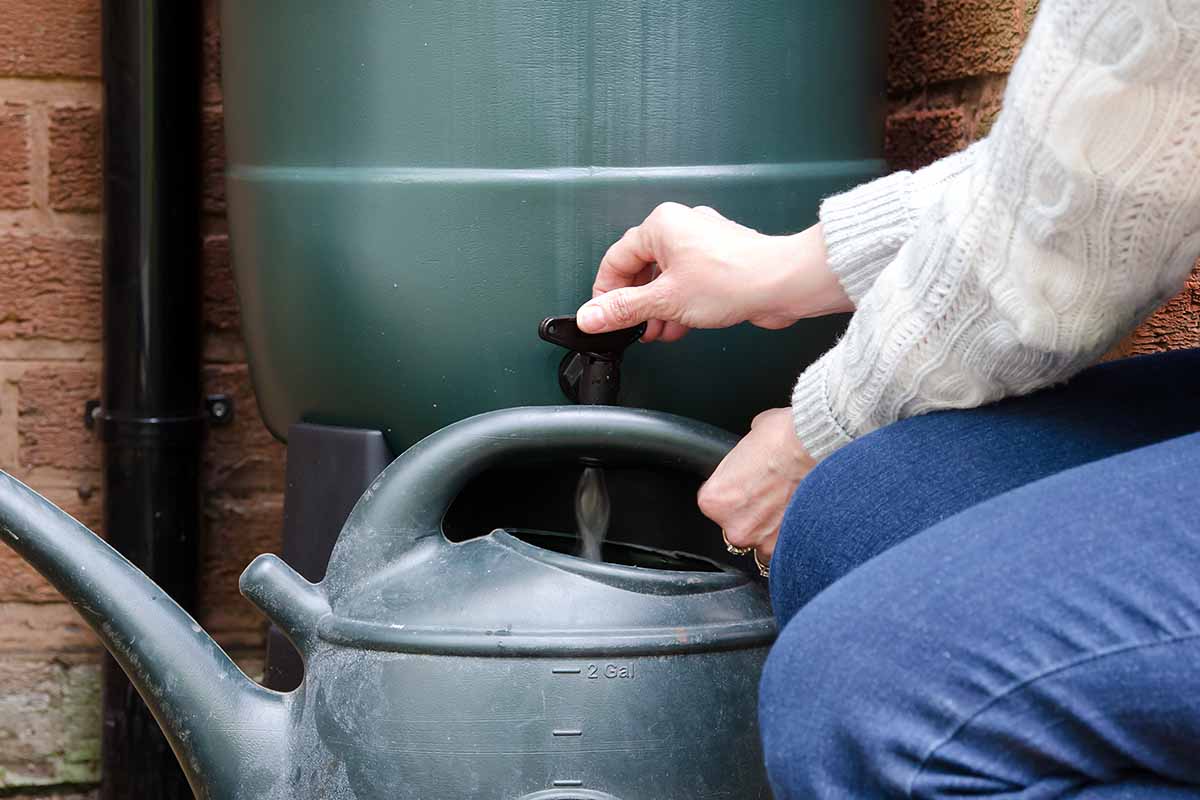
Of course, you can automate and mechanize your watering methods to make your time spent in the garden more efficient, but watering doesn’t need to be highly complex.
In fact, it can be as simple as dumping a bucket of water at the roots of your pear tree.
Speaking of efficiency, I want to address an important topic: water conservation, which I’ll explain in the next section.
I’ll begin by answering the primary question about irrigating pear trees: how should one go about it?
You can use buckets, a regular garden hose, or a soaker hose. If using a hose, just place the nozzle near the root zone on a slow trickle to give a deep, slow soaking.
Or step up your irrigation game and take your setup to the next level. I’m talking about drip irrigation.
If you’ve got multiple trees, shrubs, and other plants, this option is a lifesaver.
It takes some planning and an initial investment of time and money but makes watering more consistent and much easier to manage.
I completed my installation this spring and did the work myself. If you’re mechanically inclined, this is a basic-level DIY job. I’m thrilled with the results. My only regret is that I wish I’d done it sooner.

In some commercialized settings, overhead gun irrigation is sometimes used, but for a backyard orchard or urban farm setting, drip lines are probably your best bet.
Drip lines can be run from your city water outdoor hose bibs or dedicated irrigation outlets installed specifically for these systems.
Another option is to run lines from rain collection tanks, using gravity or pumps to move the water through the lines.
Once a main line is laid, emitters, or drippers, are connected into the line, delivering trickle irrigation directly to the root zones of your pear trees and other plants. You can customize your system to fit your needs.
Check out Gardener’s Supply Company to get an idea of the different options.
Now you know how to irrigate. Let’s talk about when and how often to irrigate.
Of course, a customized schedule can depend on various factors and I’ll cover all of these variables in the next section. This is a general overview.
Here in Zone 5 where I live, if we don’t receive rainfall during the growing season, I aim for two to three drip waterings per week.
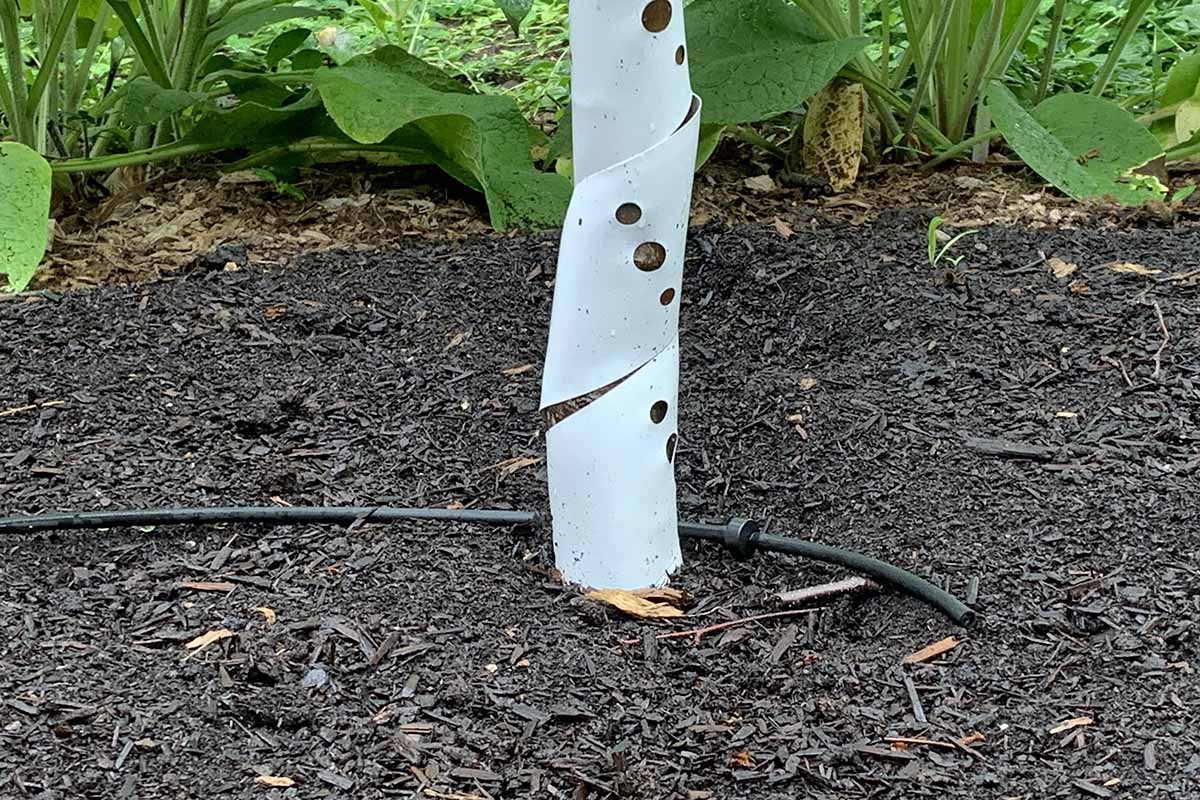
Avoid watering in the middle of the day – this is inefficient and wasteful due to faster evaporation. Aim for early morning instead.
Also, you should allow the soil to dry out in between waterings to prevent over-saturation and disease, so this might mean waiting days or even weeks in between waterings.
Rather than sticking with a set schedule, it is often best to observe the soil and the needs of your plants, and water accordingly.
Modern Watering Tech
I’m a traditionalist in many ways, so it surprises some people to know I’m also a fan of new technology.
I believe there is room for both old and new methods to live harmoniously together, especially while we look toward ways to solve issues like climate change and food insecurity.
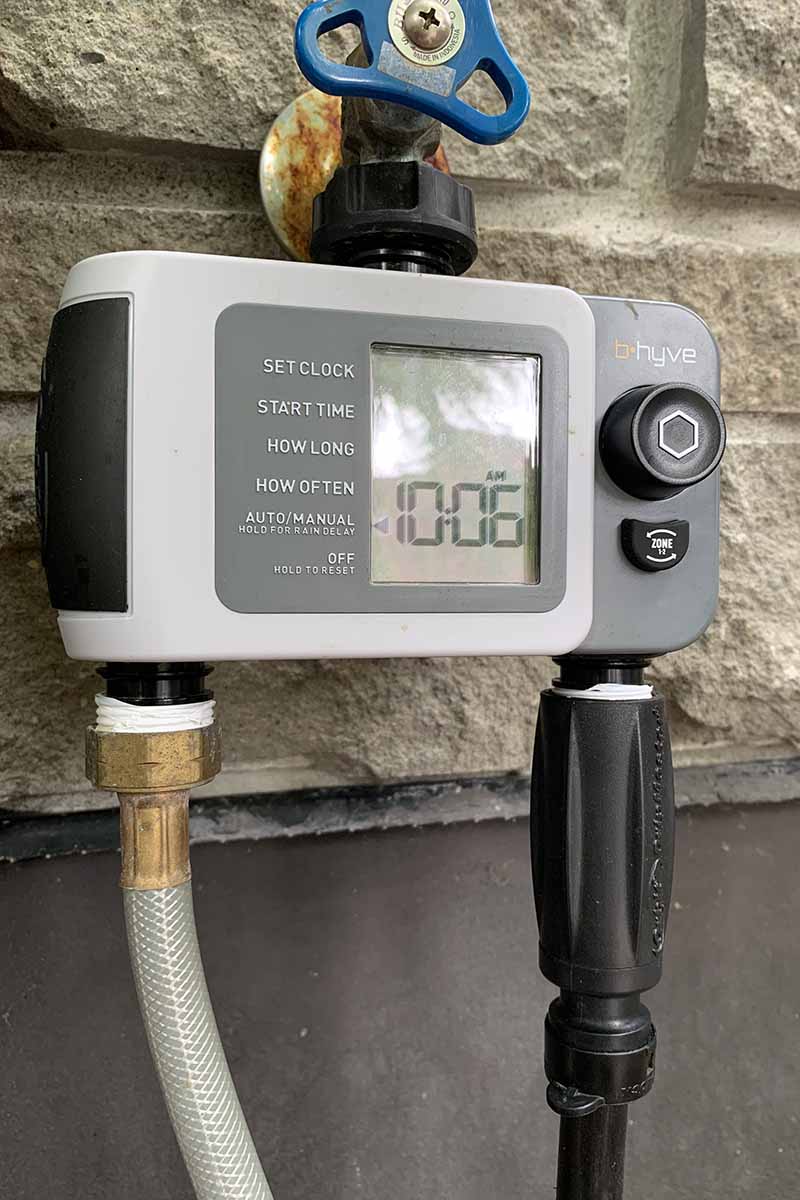
Today, gardeners and farmers have access to new technology and gadgets.
Some may be useless, but others can streamline mundane everyday tasks. And I love that! In regard to irrigation for your pear trees, there are two gadgets to consider.
The first is a timer. Timers can be scheduled to operate watering systems on a consistent schedule.
They’re usually installed between the spigot and the hose or line and run on solar or battery power.
I like the Orbit brand of products, and this watering timer that’s available from Tractor Supply is a basic, dependable option.
I decided to embrace the latest smart system in my setup at home, so I can control everything from an app on my phone. The app also tracks the amounts of water used and adjusts the schedule based on local weather conditions.
The second gadget to consider is a soil moisture meter or sensor. These tools report instant, accurate data and using one could be helpful to determine if and when you need to irrigate.
Access to reliable information is valuable when making decisions in the orchard, especially if you’re dealing with different soil types in your plot of land.
For example, if the north side of your property has loamy soil and the south side has clay soil, they will retain different amounts of water and require different amounts of irrigation.
For large-scale professional farmers, there are some fancier, more technologically advanced devices available for measuring moisture in the soil.
Using them takes the guesswork out of evaluating water stress and has been proven to improve efficiency and conservation.
But for most home gardeners, they can be prohibitively expensive and overly complicated to use.

I recommend the sturdy and well-constructed Soil Meter Moisture Probe made by A.M. Leonard. You can find it on Amazon.
I like this meter because it allows for calibration to your own soil and its brass probe reaches down 24 inches deep. This means you can get very accurate readings, and it’s easy to use. Most hand-held meters like this aren’t as fine-tuned.
If tools like this appeal to you, read our guide to using moisture meters and then check out our roundup of other recommended models.
Is using these gadgets imperative for home gardeners? Not necessarily today. But if the work becomes unmanageable as I build out my gardens, I’m glad I have that option tucked in my back pocket for later, and now you do too.
For a deeper dive into irrigation systems, see our guide.
As I mentioned earlier, there are many points to consider before deciding how and when to irrigate. I’ll cover the most common of these next.
5 Factors to Consider
To help determine how and when to irrigate, first consider a few variables like climate and weather, whether your pear tree is planted in the ground or in a container, and the age of your pear and which stage of development it’s in, as well as differences from one season to the next as it moves through its growth cycle.
I’ll walk you through a few of these.
1. Water Conservation
To me, this is an important one. As an urban farmer who has studied permaculture, I know that water is a precious resource and it deserves attention in any discussion about irrigation.
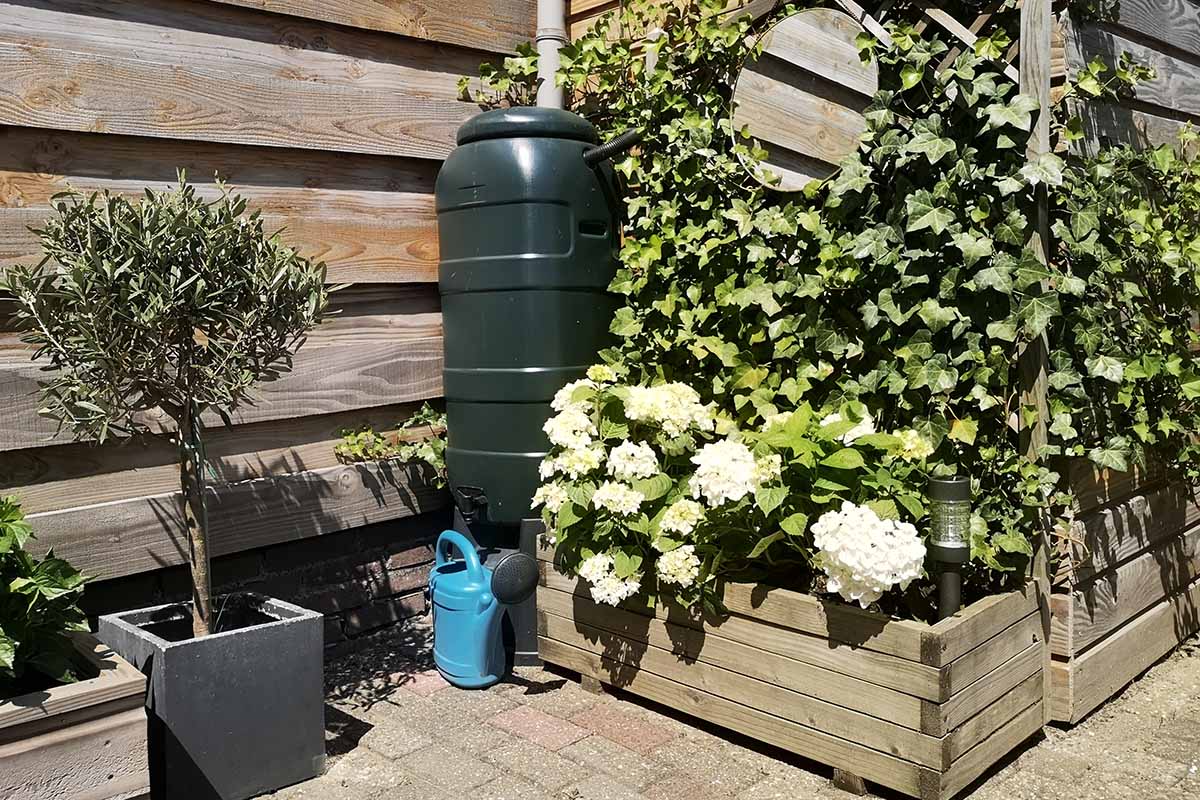
Rain collection systems are simple to implement, and swales that strategically move water through your orchard are a smart option to put nature to work for you.
Installing rain barrels is a good first step for beginners.
With so many options to choose from, you can find a rain barrel to suit your style and accent your outdoor space. Check out the selection from Gardener’s Supply Company.
But when faced with drought, even with swales and collection systems in place, we might need to supplement natural rainfall with irrigation in order to produce food.
The key is to do it sustainably and as efficiently as possible. Carefully determining when and how much to irrigate allows for a more responsible use of resources.
If you haven’t noticed by now, I’m a fan of drip lines. Putting water exactly where you need it, only when you need it, makes good sense to me.
Some systems incorporate low-volume microjet spraying, which is a good option.
But studies have shown that drip irrigation can translate to impressive dollar savings and increased yields, even compared to microjet irrigation.
2. Climate and Weather
In times of extreme heat or drought, it makes sense to irrigate. But it’s a relief to know that fruit trees, including pears, are fairly tolerant once established and they can adapt to survive.
Studies have shown that fruit trees have a mechanism of osmotic adjustment that allows them to cope in times of drought.
Basically, osmotic adjustment is a plant’s natural ability to self-adjust in response to a lack of water. This is what helps pear trees survive for hundreds of years on their own.
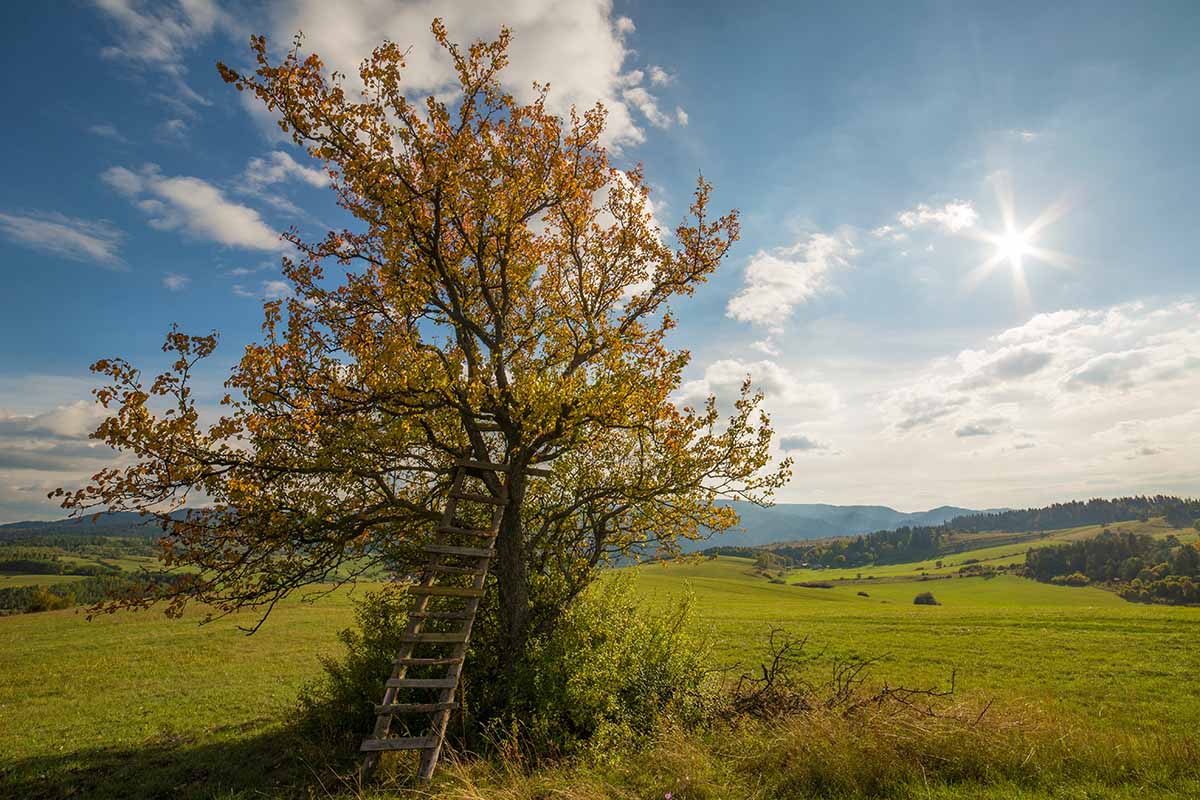
We know that with limited supplemental irrigation, some species can sustain adequate growth and fruit yields, even when faced with stress.
What does this mean for the home gardener or orchardist?
Keep a close eye on the weather trends in your region.
If you find yourself in the middle of a dry, hot season you should definitely irrigate, but don’t feel the need to overcompensate – your pear tree should self-adjust that season and recover.
And if these climatic changes become the norm, it should adapt.
3. Containers vs. In-Ground Plantings
By now, we all know that water is essential for growing healthy pear trees and producing viable fruit.
Water assists in the uptake of nutrients from the soil. So, we must consider the soil in which the pear tree is growing.

Trees planted directly in the ground have access to naturally occurring water reservoirs. But fruit trees planted in containers don’t. Their potting medium will dry out quickly without consistent rain.
This means trees grown in containers are an entirely different beast.
They will require irrigation and should be watered frequently and generously throughout the growing season. The good news is that drippers can be directed right into pots.
4. Young vs. Established
When pear trees are young and first planted, the roots are short and undeveloped and they don’t spread very deep or wide.
They can’t easily find and access moisture reservoirs in the ground, and this makes the plants vulnerable to water shortages.
This is when you want to pay special attention to irrigation.
As your pear grows, once it hits its third or fourth year, the roots will move deeper into the soil.
They’ll become stronger and won’t require as much watering unless it’s a particularly dry season, or if your pear tree is growing in a container.
5. Seasons and Dormancy
As I mentioned, to maximize yields, there are critical periods during a pear’s fruit production cycle that require more water.

These periods are during flower formation, early fruit set, and final fruit swell, which is usually about two to four weeks before harvest.
Providing sufficient water during these times makes it easier for trees to produce a high-quality crop.
Outside of fruit production, it’s not as crucial to supplement established specimens with irrigation. Studies of a pear tree’s ability to adjust to water deficits confirm this.
When trees aren’t working to produce fruit, this is a good time to implement water conservation strategies.
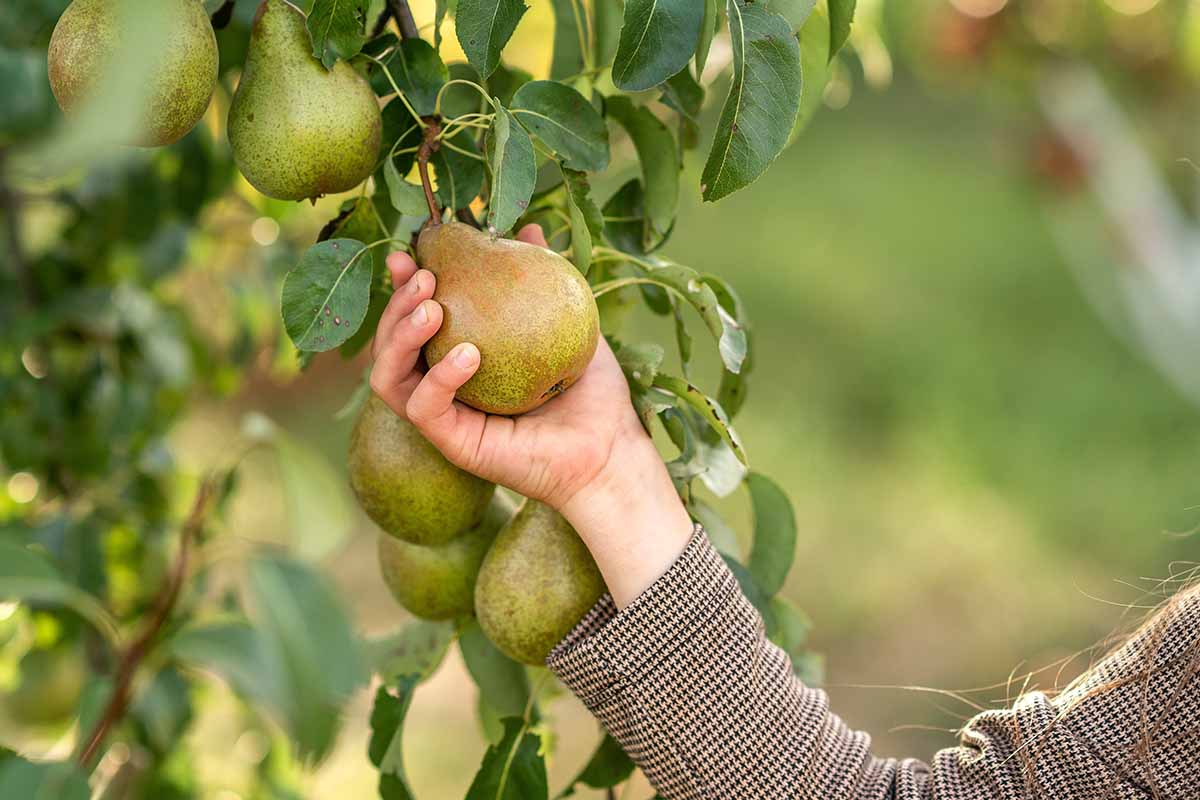
That doesn’t mean you should completely ignore your pear tree, though – always pay attention to the weather and plan accordingly.
Especially in times of drought, it’s still beneficial to irrigate to prevent water stress throughout the growing season.
In my local area, when late autumn and winter approach, trees begin to prepare for dormancy. If weather patterns are typical, there is usually less need to water during the dormant season.
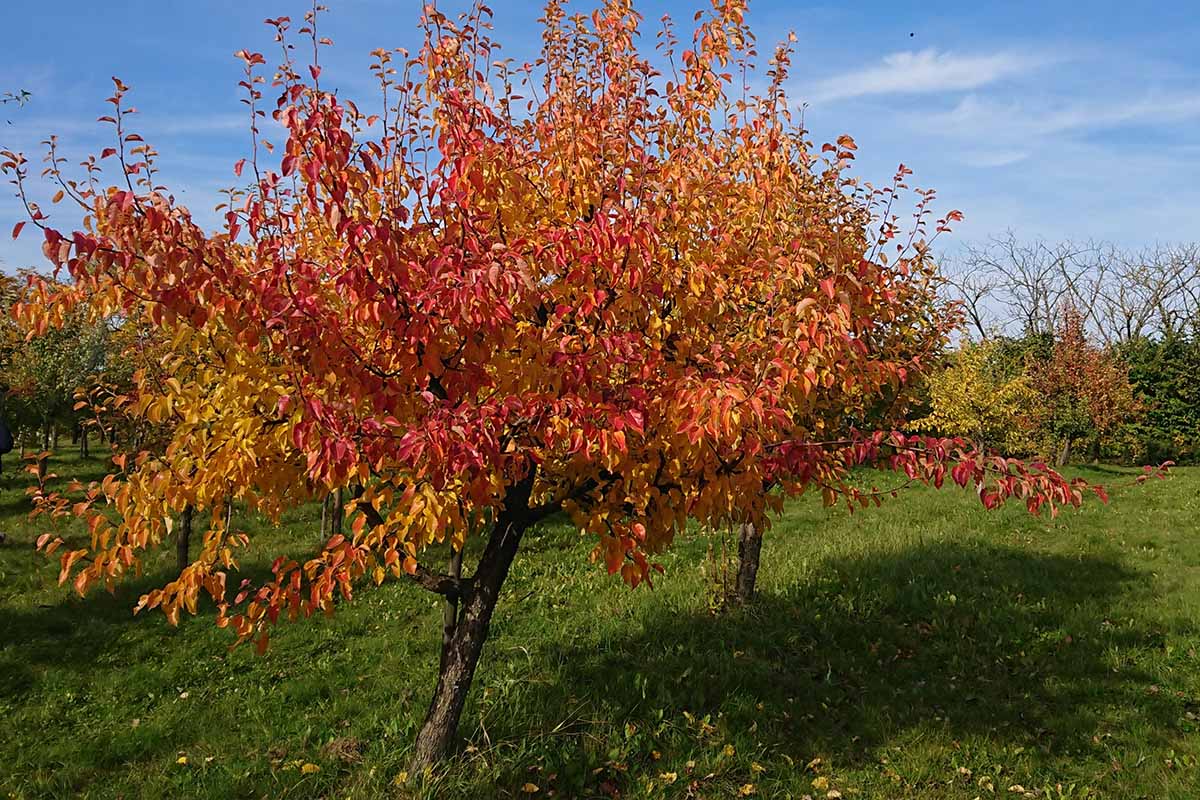
If I’m planting a new tree in the fall, I soak it in at the time of planting. Depending on local weather conditions, I provide supplemental water as needed until first frost and then leave the tree to its own devices through the winter.
Not only is the tree dormant during this time, but evaporation from the soil is low.
There is typically sufficient rainfall to meet the needs of even young specimens in early spring. I note any deficiencies in my gardening journal during my early inspections and irrigate if necessary.
If you’re having an unusually dry spring or fall, you may need to water. You can check this by feeling the soil.
A simple test to determine if the soil is dry is to dig to a depth of an inch or two and feel for dampness. If you don’t detect any, then water. Otherwise, a soil moisture meter as described above may also be used.
Quick Tips
I’m always on the hunt for more ways to improve my irrigation and conservation skills.
Beyond the factors I’ve just mentioned, here are a few more tips that might help when considering your own plan:
Apply Mulch
Apply a layer of mulch, such as well-rotted manure, garden compost, or wood chips around the base of your pear trees every spring. Keep the mulch at least six inches away from the trunk.
This layer of mulch will form a barrier to hold moisture in the ground below while encouraging healthy soil-building at the same time.
See our guide on using mulch for low maintenance gardening.
Provide Shade
In a major heat wave, consider shading your tree with shade cloth or a patio umbrella.
Thin Developing Fruit
Thin the fruit on your pear tree to conserve water and help the remaining fruit to develop better.
Make a Plan
Have an irrigation plan in place before planting new trees.
Keep Up with Weeding
Pull weeds around the base of the tree to eliminate competition for valuable moisture.
Prune Appropriately
Prune and train your pear trees to avoid directing water resources to unnecessary growth.
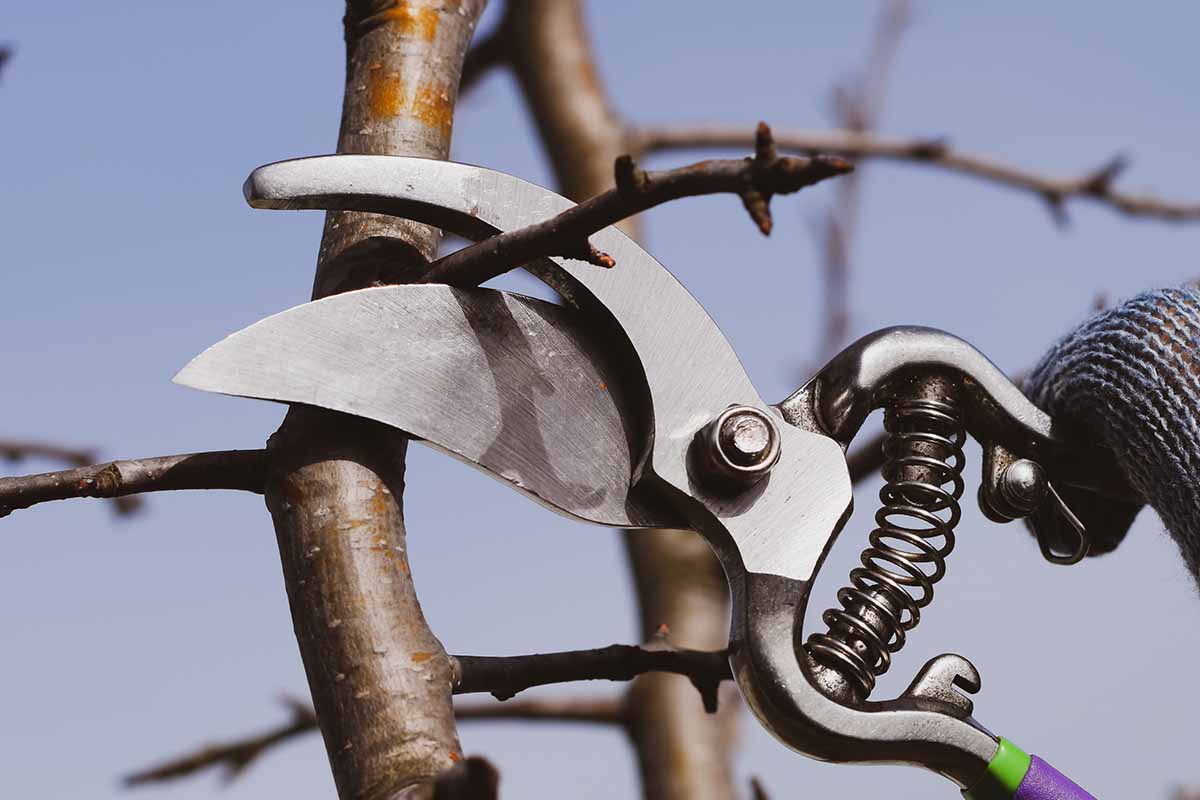
See our guide to pruning pear trees for more information.
Water Smart for Pear Art
Think of your pear tree as a work of art. You’re creating a masterpiece and water is one of your mediums.
Remember that irrigation is important – knowing how, when, and how much to water is key and this will play a big role in determining overall performance and health.

Consider conservation methods, plan ahead, observe, and react to changing conditions and seasons. Take advantage of the available tools and technology if they make sense for you.
In addition to irrigating, don’t forget to follow best practices of proper care in other areas as well, like being on the lookout for signs of pests or disease, and pruning regularly.
Then sit back, kick your feet up, and admire your work of art while you enjoy its tasty fruit.
If this article has been helpful, or if you have some additional tips to share, let us know in the comments.
And remember, knowledge is power. If you’re looking to learn more about growing your own pear trees, check out these guides next:
